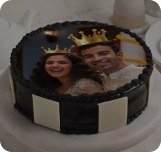Celebrate Diwali Gifts, Tradition
About Diwali
Diwali is a festival of lights and one of the major festivals in India. Hindus, Jains, Sikhs as well as some Buddhist celebrate this festival of light. It is a five-day festival that falls during the Hindu lunisolar month of Kartika. According to the Gregorian calendar, Diwali is celebrated in the month of October or November. It is usually celebrated twenty days after the Vijayadashami or Dussehra festival. The Diwali festival has various significance. It symbolizes the victory of light over darkness, good over evil, and knowledge over ignorance. The five-day long Diwali festival starts with Dhanteras and ends with Bhai Dooj.
Every region of India has its own perspective as well as reasons for celebrating Diwali. In some regions, it is a celebration of the day Lord Rama returned to his kingdom Ayodhya with his wife Sita and his brother Lakshmana after defeating Ravana in Lanka. The Hindus of Eastern India and Bangladesh celebrate Diwali by worshipping the goddess Kali. The Jains celebrate their own Diwali which was the day of the final liberation of Mahavira. The Sikhs celebrate Bandi Chhor Divas to mark the release of Guru Hargobind from a Mughal Empire prison. Furthermore, Newar Buddhists celebrate Diwali by worshipping the goddess Lakshmi.
Various Religious Significance Of Diwali
Diwali is celebrated by various religions such as Hindus, Jains, Sikhs, and Newar Buddhists. Moreover, every religion has its own historical events and stories for the celebration of the Diwali festival. Here are some of the popular religious aspects for the celebration of this auspicious festival of lights.
Hinduism
The significance of Diwali varies widely depending on region and even within Hindu tradition. The most famous one is the tale of the epic Ramayana. According to that, Diwali is the day when Lord Rama, Sita, Lakshman, and Hanuman returned to Ayodhya after spending 14 years in exile and after defeating the demon king Ravana. On their return, the residents of Ayodhya lit up the whole city with thousands of Diyas. Since then, this day is celebrated as Diwali whose other name is the festival of lights.
Another tale is of the Dvapara Yuga period in which Lord Krishna killed the evil demon king of Pragjyotishapura named Narakasura and released 16000 girls held captive by him. The day on which Narakasura was killed by Krishna is celebrated as Naraka Chaturdasi. Furthermore, on the next day, Diwali is celebrated as a sign of the triumph of good over evil after Krishna's Victory over Narakasura. Hindus from the Braj region in northern India as well as southern Tamil and Telugu communities view Diwali as the day the god Krishna overcame and destroyed the evil demon king Narakasura.
Many Hindus also relate the Diwali festival with Lakshmi, the goddess of wealth and prosperity. According to Pintchman, the 5-day Diwali festival is celebrated as the day Goddess Lakshmi was born from Samudra Manthan. In several Puranas such as the Padma Purana, it is found that during the churning of the cosmic ocean of milk by the Devas and the Asuras in search of the fluid of immortality goddess Lakshmi was born. Thereafter, on the night of Diwali, goddess Lakshmi chose and wed Vishnu. Along with Lakshmi, Ganesha, the elephant-headed son of Parvati and Shiva, is also remembered as one who symbolizes ethical beginnings and the remover of obstacles.
In eastern India. Hindus associate the Diwali festival with the goddess Kali and her victory over thousands of Asuras which symbolizes the victory of good over evil.
Trade and merchant families and others also worship Saraswati, who embodies music, literature, and learning as well as Kubera, who symbolizes book-keeping, treasury, and wealth management.
In western states such as Gujarat and certain northern Hindu communities of India, the festival of Diwali signifies the start of a new year.
In all these tales of Hindu culture, one thing is common i.e., good always triumphs over evil.
Jainism
In Jain tradition, Diwali is celebrated as Mahavira Nirvana Divas. The Jain Diwali has a similar tradition to the Hindu Diwali such as the lighting of lamps and the offering of prayers to the goddess Lakshmi. However, the focus of the Jain Diwali is the enlightenment of Mahavira. This practice of lighting lamps in Jain tradition first began on the day of Mahavira's nirvana in 527 BCE. At that time, 18 kings who had gathered for Mahavira's final teachings issued a proclamation to lit lamps in remembrance of Mahavira.
Sikhism
On the occasion of Diwali, Sikhs celebrate Bandi Chhor Divas in remembrance of the release of Guru Hargobind from the Gwalior Fort prison by the Mughal emperor, Jahangir. And, also the day he arrived at the Golden Temple in Amritsar. But, according to J.S. Grewal, a scholar of Sikhism and Sikh history, Diwali in the Sikh tradition is older than the sixth Guru Hargobind legend. Guru Amar Das, the third Guru of the Sikhs, built a well in Goindwal with eighty-four steps for Sikhs so that they can bathe in its sacred waters on Baisakhi and Diwali as a form of community bonding. In the Sikh community, the festival of Diwali highlights three events. First, the founding of the city of Amritsar in 1577. Second, the release of Guru Hargobind from the Mughal prison. And third, the day of Bhai Mani Singh's martyrdom in 1738 as he refused to convert to Islam.
Buddhism
Newar Buddhists of Nepal, who worship various deities in Vajrayana Buddhism, celebrate Diwali by offering prayers to the goddess Lakshmi. Newar Buddhists in Nepalese valleys also celebrate the Diwali festival for a period of five days in the same way as the Hindu Diwali. Furthermore, this five days long celebration is called Tihar festival in their region.
Why Do We Celebrate Diwali?
Diwali is a festival of lights that celebrates the victory of good over evil and light over darkness. People celebrate this festival to remember that good always triumphs over evil. For the preparation of the Diwali festival, we can see people cleaning, renovating as well as decorating their homes and workplaces with flowers and rangolis. Furthermore, they also lit up diyas and colorful lights at their place. On the night of Diwali, they wear fine clothes, illuminate their homes with diyas and colorful lights, and worship goddess Lakshmi. Furthermore, they also light fireworks and share sweets as well as gifts with their family and friends.

















